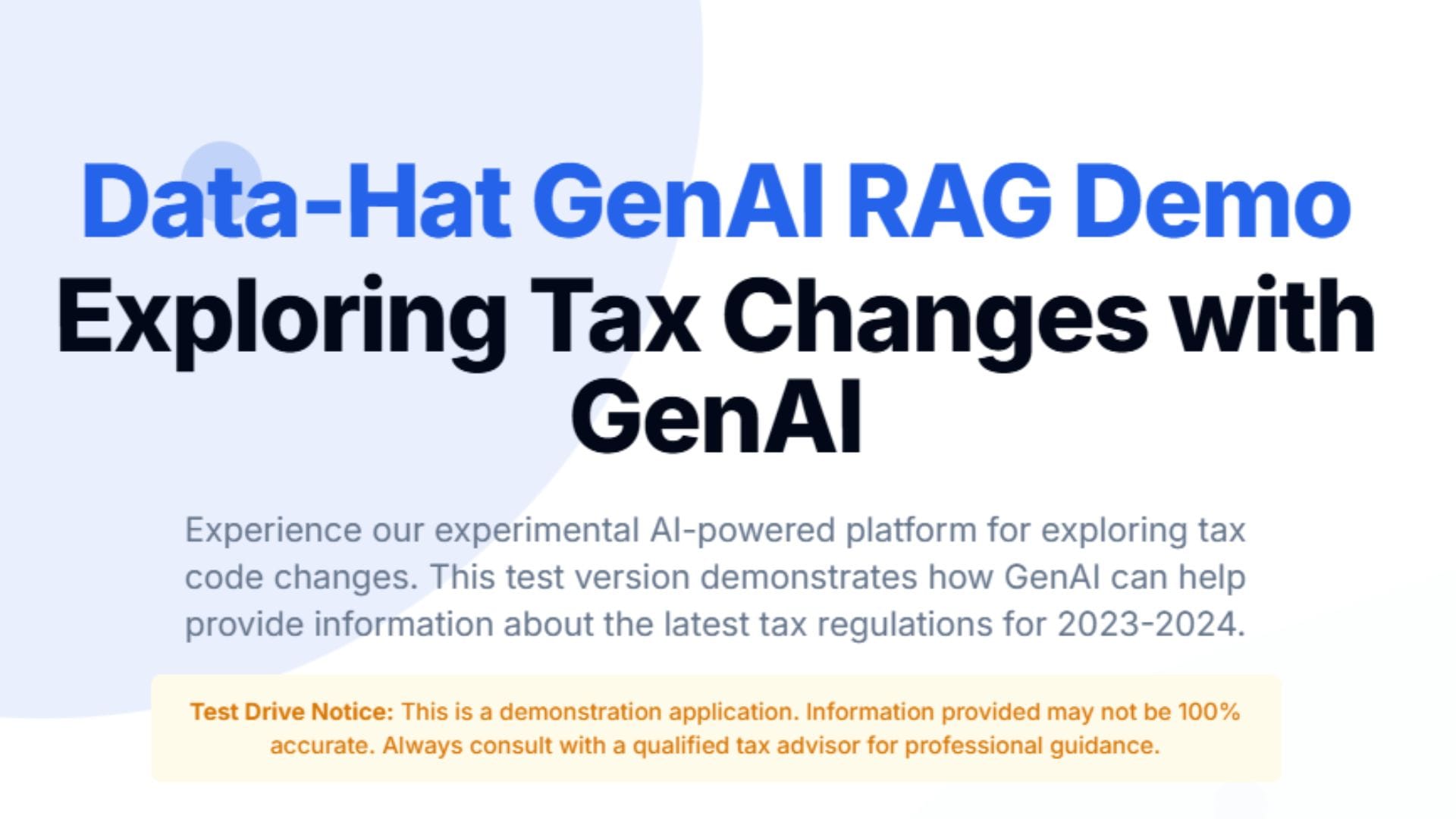Explore how Agentic RAG architecture delivers accurate, reliable, and contextually relevant AI solutions for enterprises, using a Tax Assistant as a key example to mitigate hallucination risks.
Explore how Agentic RAG architecture delivers accurate, reliable, and contextually relevant AI solutions for enterprises, using a Tax Assistant as a key example to mitigate hallucination risks.
> Date
> Author
Kshitij Kumar
> Reading Time
5 minutes

As organizations increasingly adopt generative AI solutions, the need for accuracy, reliability, and contextual relevance has never been more critical. This white paper examines how Retrieval-Augmented Generation (RAG) architecture creates AI systems that deliver precise, trustworthy information by connecting large language models with proprietary knowledge bases. Using a Tax Assistant as our primary example, we demonstrate how RAG-based AI agents can transform enterprise operations while mitigating hallucination risks.
PS: This is not tax advice – please talk to your tax advisor – this is intended just to demonstrate a sophisticated Agentic RAG example.
Traditional generative AI models rely solely on their pre-trained knowledge, which presents three significant limitations for enterprise use:
Retrieval-Augmented Generation addresses these limitations by dynamically connecting AI models to current, organization-specific knowledge bases. Our Tax Assistant prototype demonstrates this approach in action, helping professionals navigate complex, frequently changing tax regulations with confidence.
The foundation of our Tax Assistant is a comprehensive Data Hub containing:
This information, primarily in PDF and tabular formats, undergoes a sophisticated preparation process:

When a tax professional submits a query, our system follows a structured workflow:
This architecture ensures that responses are always:
Implementing RAG architecture for enterprise AI delivers multiple advantages:
The RAG architecture demonstrated in our Tax Assistant can be applied across numerous business functions:
Financial Advisory Services
Financial institutions can build systems that incorporate market data, investment reports, and regulatory information to provide personalized financial guidance.
Legal Operations
Law firms can develop assistants that retrieve and summarize relevant case law, statutes, and legal documents, dramatically accelerating research processes.
Research & Development
R&D departments can create systems that analyze scientific literature, formulations, and experimental data to accelerate innovation and problem-solving.
Regulatory Compliance
Multinational Enterprises can implement systems that monitor regulations across jurisdictions, proactively alerting leadership to changes and their operational impacts.
Knowledge Management
Organizations with extensive documentation can transform static knowledge bases into interactive systems that precisely answer employee questions.
As enterprises seek to leverage generative AI while maintaining rigorous standards for accuracy and reliability, RAG architecture provides a compelling solution. The Data-Hat AI Tax Assistant prototype demonstrates how organizations can harness the power of large language models while grounding their responses in verified, current information.
By connecting AI systems to organizational knowledge bases, companies can develop solutions that not only answer questions but do so with precision, relevance, and transparency. As regulatory complexity increases across industries, these systems will become increasingly valuable for maintaining compliance while improving operational efficiency.
If you have a specific use case in mind, let’s discuss it.

Kshitij Kumar (KK) is a globally recognized data and AI leader with over three decades of experience. His expertise, honed through senior leadership roles at companies like Haleon and Farfetch, spans from crafting impactful data strategies to harnessing the power of GenAI for business transformation. At Data-Hat AI, he’s dedicated to bridging the gap between cutting-edge technology and real-world business value, helping clients achieve measurable growth and competitive advantage.
Kshitij Kumar (KK) is a globally recognized data and AI leader with over three decades of experience. His expertise, honed through senior leadership roles at companies like Haleon and Farfetch, spans from crafting impactful data strategies to harnessing the power of GenAI for business transformation. At Data-Hat AI, he’s dedicated to bridging the gap between cutting-edge technology and real-world business value, helping clients achieve measurable growth and competitive advantage.
Ready to claim your share of real estate’s billion-dollar AI opportunity? This guide reveals how…
Discover why 1st-party data is crucial for AI success. Learn its benefits, effective collection strategies,…
Explore how Agentic RAG architecture delivers accurate, reliable, and contextually relevant AI solutions for enterprises,…
© 2025 Data-Hat AI | All Rights Reserved.